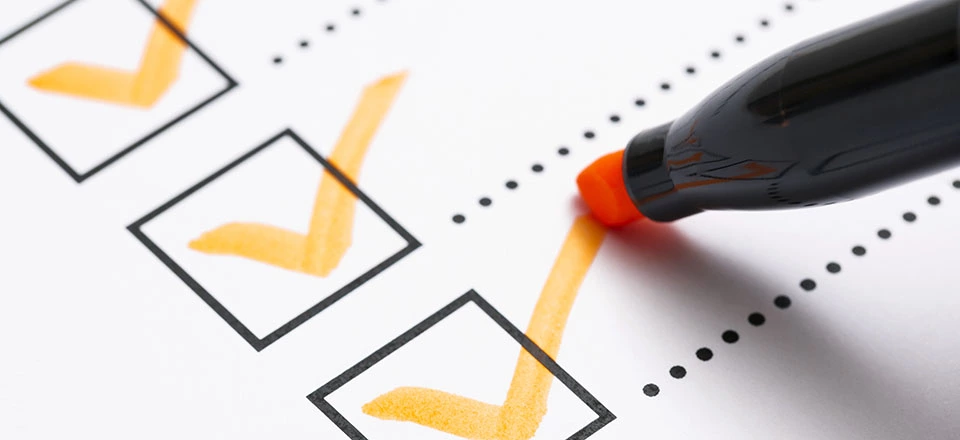Trademark Registration
Trademark registration follows a very strict application process in the UK and is subject to clear legal guidelines regarding trademark law and brand protection which define the requirements that must be fulfilled in order for a trademark application to be filed. The UK Intellectual Property Office (IPO) is the central authority responsible for trademarks registered in the UK. Trademarks requiring international protection or protection in the EU must follow separate application procedures, as UK trademark law doesn’t extend out of the UK. This article will list the steps for trademark registration as well as the costs for brand application in the UK.
Preparation for trademark registration
UK trademark law has clearly defined what qualifies a product or service to be registered as a trademark. Before considering a trademark application, it’s important to check that the object of the desired trademark fulfills the criteria of a protected trademark under the IPO as well as to determine whether it is in conflict with pre-existing brands – brands that have already been registered with the IPO by a competitor.
What can be protected as a trademark?
Trademarks are covered by the Trade Marks Act 1994 and are defined as follows: “In this Act a “trade mark” means any sign capable of being represented graphically which is capable of distinguishing goods or services of one undertaking from those of other undertakings. A trade mark may, in particular, consist of words (including personal names), designs, letters, numerals or the shape of goods or their packaging.” The Trade Marks Act 1994 also allows for the registration and protection of the following marks:
- Certification mark: Marks used to verify that a good or service was provided by members of a particular union or organisation (see section 50).
- Collective mark: Trademarks or service marks used to indicate membership in a union, association, or other organisation (see section 49).
Trademark classification is also used to determine the level of protection that a mark will receive. Trademarks are classified under the following four terms, listed in order of most to least protection:
- Distinctive: The strongest mark, distinctive trademarks include terms which are created specifically for trademarking purposes. A distinctive mark has no other meaning outside of the product or service that it describes, and the word used in the mark (e.g. Skittles) was not a real word prior to association (i.e. can’t be found in the dictionary). Words used in distinctive marks must bear no resemblance to real words.
- Arbitrary: Common words or symbols with no relation to the product or service which take on a new meaning as a result of association are included under arbitrary marks. Examples of arbitrary trademarks include brands such as Apple and Amazon.
- Suggestive: Trademarks which describe a product or service indirectly can be considered suggestive marks. These can include product names such as Band-Aid or Google, but do not include any direct descriptions. Suggestive marks are the second weakest trademark.
- Descriptive: The weakest mark, descriptive trademarks require proof of a secondary meaning in order to be valid. These are generally difficult to register. The mark (e.g. American Airlines) must be shown to achieve a higher meaning through its use before being considered for trademark registration, or can become a distinctive mark through the addition of other elements to the name or logo.
Items not allowed to be trademarked include content which is offensive, contains curse words or pornographic images, describes the goods or services it relates to, is misleading, is a 3-dimensional shape associated with the trademark (e.g. can’t trademark the shape of an egg for eggs), is too common or non-distinctive, or looks too similar to state symbols such as flags or hallmarks, as defined by the World Intellectual Property Organisation Guidelines. Trademark classification also requires applicants to choose a class for their trademark. Classes 1-34 apply to goods, and classes 35-45 apply to services. The classification search tool TMClass can help you if you’re unsure in which class your trademark belongs.
Trademark searching
Prior to the application for registration of a trademark, a clearance search should be conducted using the IPO database in order to determine whether any trademark rights have already been claimed in similar wording/design or used on related good/services. Trademarks can be searched by number, owner, or keyword, phrase, or image. Trademark searching can also help to reduce the likelihood of confusion for a prospective mark with existing marks. Likelihood of confusion is a common cause for trademark lawsuits, where the owner of one trademark alleges confusion about the origin, sponsorship, or approval of a product due to use of the trademark or a similar mark by someone else. In such cases, actual confusion does not have to be proven. Instead, courts consider the strength of the mark in question as well as the similarity between the marks and the differences in the products or services offered. For example, similarity can be ruled out and the likelihood of confusion dismissed if the products or services are different enough from one another. Trademark lawsuits also occur on the grounds of trademark dilution. Because trademark dilution lawsuits contend that another’s use of the mark or a similar mark blurs the distinction of or damages the existing mark, they depend largely on the fame of the existing mark. Dilution is covered in the Trade Marks Act 1994 and allows for:
- Fair use by a competitor in comparative ads.
- Noncommercial use.
- All forms of news reporting and commentary.
Dilution law also considers various other aspects of the trademark in question in order to determine the plausibility of the claim . To reduce the risk of legal disputes, trademark research using their federal database comes highly recommended by the IPO prior to trademark application. Hiring a trademark attorney is also something to consider to assist with the application process.
Trademark registration acceptance
The steps for trademark application and upkeep/renewal vary depending on trademark classification and use. The process of verifying trademark registration goes as follows: Application, IPO review, mark publication, registration certification, and registration renewal.
Application
Applications can either be sent online or by post using paper forms, and have associated non-refundable fees. The cost options and their related requirements are outlined by the IPO. It’s important to note that payment of application fees does not guarantee registration, and applications which get rejected will not have their fees refunded.
USPTO review
Applications received by the IPO will then be sent to an examining attorney to verify that they have met all of the minimum filing requirements and paid the appropriate application fees. You’ll receive feedback within 20 days in the form of an “examination report”, and then have up to 2 months to resolve any problems found by the examination. In the case of problems, you have multiple options: Request a hearing, file evidence of trademark use, divide your application, or provide letters of consent from previous trademark owners.
Mark publication
Applications that have passed the examining attorney will be published in the IPO’s trade marks journal. Notice and date of publication will be sent to the applicant, and potential opponents of the registration have two months to file their complaints. If oppositions are filed, you have various options for your application, including withdrawing your application, speaking to the opposition, or defending your application. Keep in mind that application defense will likely incur legal costs.
Registration certification
Marks that have passed inspection by the IPO examining attorney and received no opposition (or unsuccessful opposition) following publication will then be issued a certificate of registration. Notice of allowance is issued by the IPO following the initial publication of a mark. Registered applications guarantee your trademark 10 years of protection in the UK.
Registration renewal
Registrations which have received a certificate and filed the appropriate maintenance documents are up for renewal every ten years and can be renewed indefinitely. The renewal can be done online up to 6 months before the expiration of the mark and 6 months after, but beyond that time frame must be done by post.
Trademark law: Rights of successful registration
Trademarks which have received federal registration now exercise the sole right to use of the content contained within that trademark. But enforcement of trademark registration is the responsibility of the trademark holder. While the IPO will not issue new federal registrations to infringing marks, they will also not monitor possible infringements. Violation of a trademark right can be brought to legal action by the trademark holder, and infringement will be determined by the courts. Trademark holders also reserve the right to sell their brands or grant rights to third parties.
Please note the legal disclaimer relating to this article.


